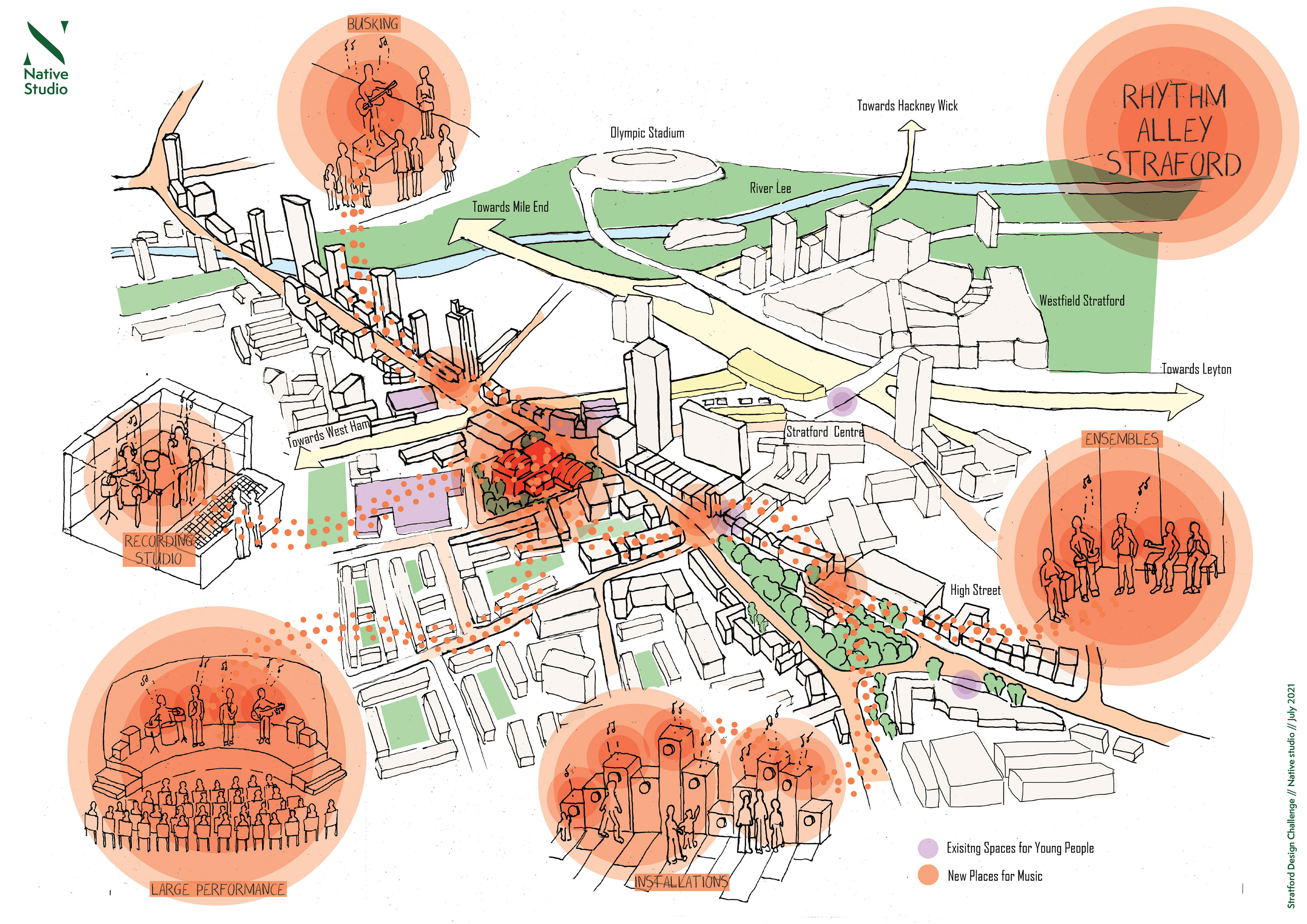'The entry suggests a physical landscape that's almost poetic' - Design challenge judge

We want to reclaim Stratford.
We want to reclaim the urban space within which we live, work and play. We are the marginalised communities from East London that watched our world change in the name of regeneration. We got a Westfield, some of us got jobs at John Lewis. But when you cross Stratford High Street - nothing has changed. The same poverty, deprivation, high crime levels and young people with no prospects and little to do, excluded from the red-line boundary of 'regeneration'.
We hail from Newham, where pirate radio stations gave rise to the grime scene. Where Dizzee and Wiley came into their own, we broadcast from the rooftops of estates and street corners where no-one would find us, we performed in the warehouses and the REX. Spaces where we were free to express ourselves through music and art. The 'regeneration' took these spaces away. Now there is no-where for young people to express themselves, no-where designed with us in mind, no-where we feel comfortable.
We propose a vision of Stratford as 'rhythm alley' - a high street emanating the sounds of the young identities that define Stratford and Newham. A tram will run through the middle, removing the large thorough-fare of cars that pass through to create a more intimate, human-centred public route. Pockets of urban spaces will be formed from which we can express ourselves through music. Music from the diverse cultures that flow through Newham - Ragas, Qawwalis, Ska and Afrobeats, to contemporary Grime and Breakbeats. Institutions surround us, but none allow us to perform and develop our informal practices of musical expression. This is why we call for Stratford High street to be reclaimed into a harmonious collection of opportunities for musical engagement. This is our strategy for the revival of our neighbourhood. The true regeneration.
We have identified various moments on Stratford high street where young people spend time. We propose these be turned into opportunities for artistic expression and performance - places of joy and excitement.
The high street will be scattered with spaces for busking, group acts, musical installations and a range of performance spaces, culminating in a larger performance space with recording facilities. This will sit on the south of Stratford High Street, the side that has been overlooked by the regeneration and that is home to local people and communities that existed long before Westfield came. The new performance space will create a musical hub and focus here, encouraging connectivity, activity, life and community-centred revival.
Smaller performance spaces are buffered by landscaping to define and create intimacy. Most importantly such spaces are informal and can be further curated and formed by performers themselves - creating agency and ownership - allowing space to begin to become genuinely public.
The opportunity to cultivate, perform and share music with public audiences allows the fostering of community spirit and encourages integration, social cohesion and a chance for the diverse cultures of London to be expressed in a public space and come together. The proposal actively enables and promotes visibility, participation and agency - the unmentioned social values.
